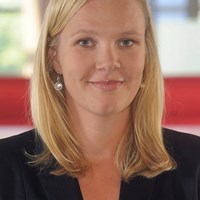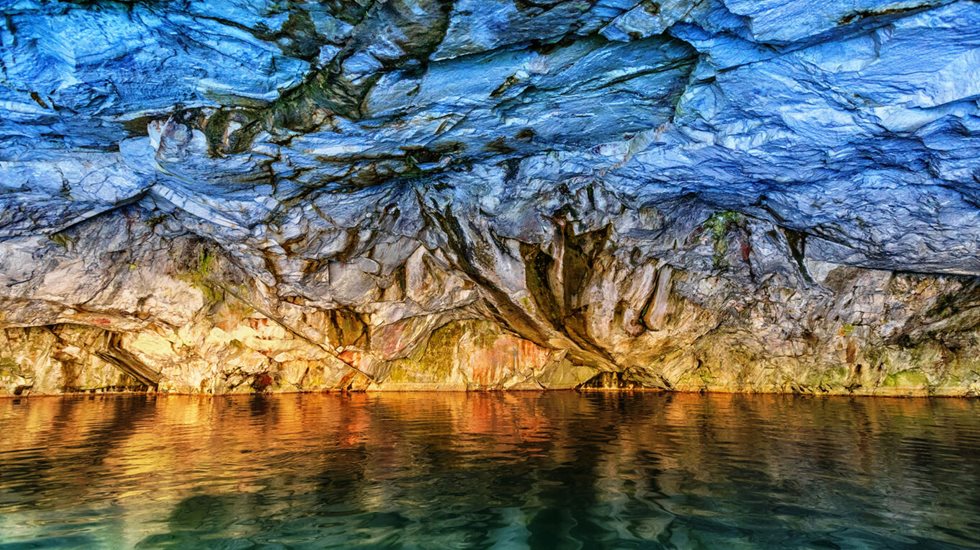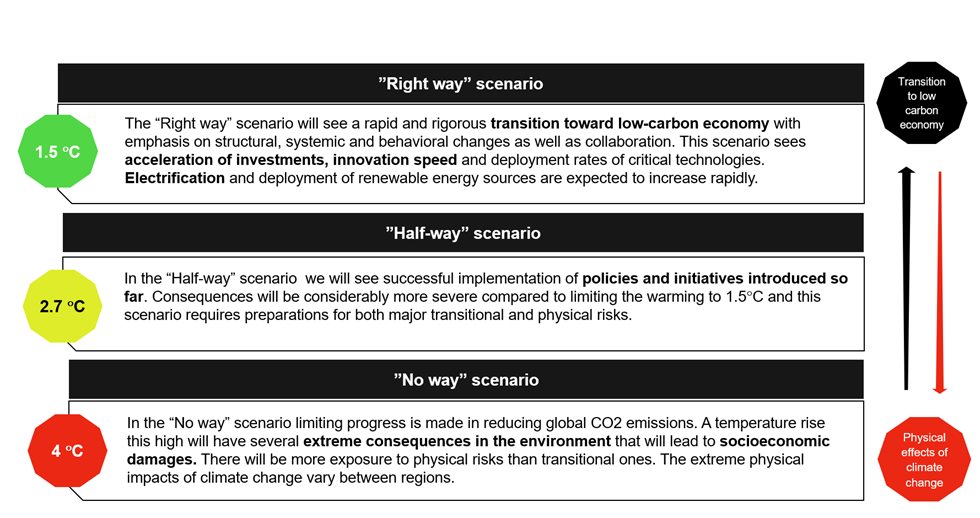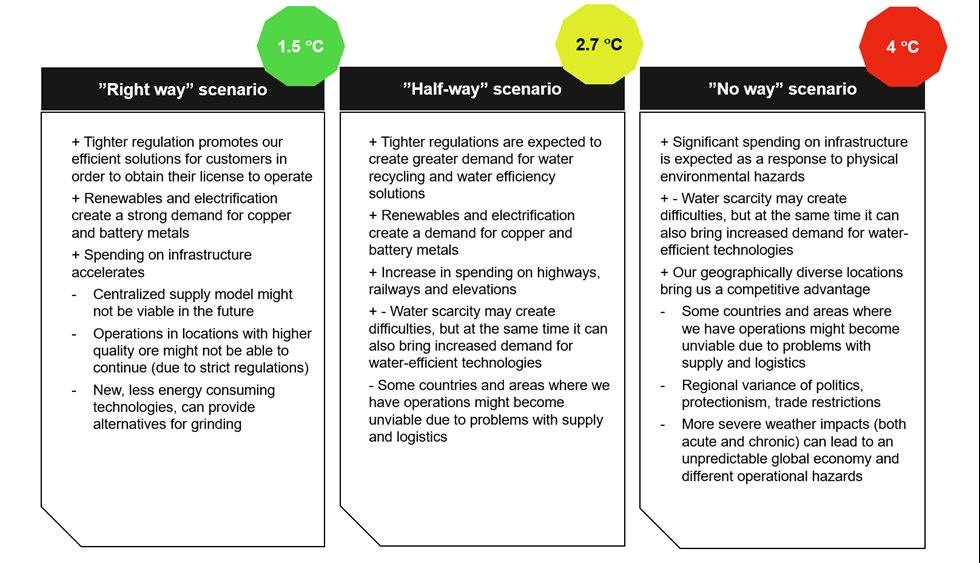The opportunities and risks in the “Right way” scenario
In the “Right way” scenario, the tighter regulation promotes our efficient solutions for customers in order to obtain their license to operate. Renewables and electrification create a strong demand for copper and battery metals and spending on infrastructure accelerates.
One of Metso Outotec’s four financial targets is directly linked to sustainability: progress in sustainability in alignment with the 1.5 °C commitment. The opportunities in the “Right way” scenario support this commitment and targets set. In addition, diversity of our businesses as well as focus and investment in enabling technologies gives us strategic resilience in this scenario. The “Right way” scenario is therefore considered to be the most desirable future outlook for Metso Outotec.
In the “Right way” scenario centralized supply model might not be viable in the future and operations in locations with higher quality ore might not be able to continue (e.g. due to strict regulations) and lower quality ore bodies must be used. In addition, new less energy consuming technologies can provide alternatives for grinding. This can be either an opportunity or risk for us. Therefore, in order to maintain a strong resilience, we will regularly review our strategy and approach.
The opportunities and risks in the “Half way” and “No way” scenarios
In the “Half way” scenario, tighter regulations are expected to create greater demand for water recycling and water efficiency solutions. Renewables and electrification also create a demand for copper and battery metals although to a lesser extent than in the “Right way” scenario.
In addition, opportunities arise from increase in spending on highways, railways and elevations, also to a lesser degree than in the other two scenarios. Whereas in the “No way” scenario significant spending on infrastructure is expected as a response to physical environmental hazards. Water scarcity may create difficulties, but at the same time it can also bring increased demand for water-efficient technologies. Due to diversity of our businesses Metso Outotec technologies can provide solutions to tackle future challenges in theses scenario as well as enable maintaining our resilience.
Some countries and areas where we have operations might become unviable due to problems with supply and logistics. However, our geographically diverse locations bring us a competitive advantage. Regional variance of politics, protectionism, trade restrictions and more severe weather impacts (both acute and chronic) can lead to an unpredictable global economy and different operational hazards (less severe in the “Half way” than in the ”No way” scenario). The risks in the “No way” scenario may be the biggest for Metso Outotec and additional measures and expenditure may be needed to adapt and ensure our resiliency in this scenario (to a lesser degree in the “Half way” scenario).



